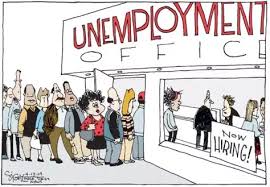How to solve southern Italy’s unemployment problem

ON A CLEAR day, from Messina in northern Sicily you can see Calabria on mainland Italy’s southern tip. The strait between them is the supposed location of Scylla and Charybdis, the mythical sea monster and whirlpool between which Homer’s Odysseus had to choose on his voyage home. Italians on either side of the strait face another hazard today—unemployment. In 2017 about a fifth of the workforce in the south, and over half of young people, were out of work.
Giovanni, a 25-year-old resident of Messina, has been jobless for seven months. None of his internships, including in nursing and shipbuilding, has yet led to a permanent job. Part of the problem is too few openings in the region, says Aldo Cammara of Education InProgress, an NGO that helps youngsters learn computer skills.
An economic downturn is making matters worse: Italy fell into recession in the second half of 2018. But longer-standing structural factors help explain why jobs are scarce in the south even as bosses up north complain of labour shortages. A recent paper blames centralised wage-bargaining, and computes the gains from switching to a Germany-style localised model.
Both Italy and Germany have big regional inequalities. Economic divergence during the cold war means that the average west German district is still 23% more productive than the average eastern one. That is a slightly wider gap than that between northern and southern Italy, point out Andrea Ichino and Johanna Posch of the European University Institute, Tito Boeri of Bocconi University and Enrico Moretti of the University of California, Berkeley. But Italian unemployment also varies widely across regions.
Nearly 350 national industrial agreements cover the vast majority of firms and formal employees in Italy. They take little account of regional differences in the cost of living and productivity. Employees can take their bosses to court (and win) if they are not paid the nationally agreed minimum. Workers in the south who are lucky enough to be in the formal sector are very well paid. But fewer are hired than would be if wages were lower.
Wage bargaining in Germany, by contrast, was decentralised soon after unification. The authors find that earnings there are nearly four times as responsive to changes in regional productivity as those in Italy. Wages in the east are much lower than in the west, reflecting lower productivity and lower living costs.
The authors reckon a similar system in Italy could bring 2.5m more people into work, amounting to an increase of 13 percentage points in the employment rate in the south. Average earnings would be up to €114 ($ 129) higher a month. But southerners already in jobs would need to take a pay cut of 6%. That is no vote-winner. Greece, Portugal and Spain introduced similar reforms—but only after sovereign-debt crises. Instead Italy is launching a “citizen’s income” in the hope of reducing poverty and unemployment in the south.
That scheme offers the unemployed a generous monthly payment and help with finding work. But it does not make it more affordable to employ workers in the south, says Mr Boeri, who until February was the head of Italy’s social-security administration. For Italy’s government, the choice between helping the unemployed and keeping the votes of the employed must seem reminiscent of Scylla and Charybdis.





